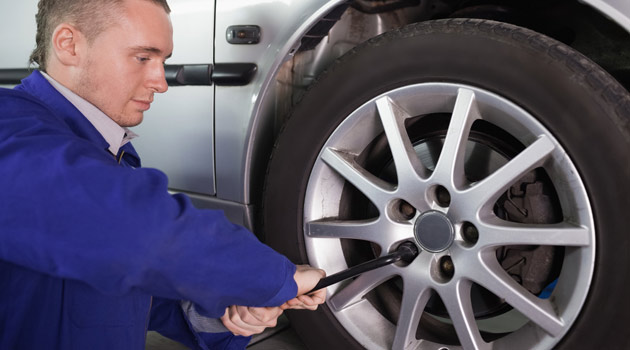Most of us are familiar with the odd flat tyre, but car tyres need changing on a regular basis anyway. And with the sheer number of mobile tyre fitters out there today there is no excuse to not keep your car tyres within the safe and legal limits. But many people don’t know the signs to look out for that their tyres are getting close to the limit. If you are amongst them, here are some indications that you need to replace them:

- Punctures: No matter how sturdy your tyres are, punctures can still happen. Sometimes they can be fixed, but more often than not this is a situation that calls for a new tyre. If you’re going to change the tyre yourself then safety is paramount so you should make sure you: pull off the road into a safe space; put on the handbrake; make sure your hazards lights are on; ensure the safety of any passengers by getting them to a safe space well away from the road; put on a high-visibility vest if you have one. If, however, you don’t know how to change a tyre then the best thing to do is call a tyre fitter or other roadside assistance firm.
- Damaged Tyre: Sometimes a tyre can be damaged to the extent when it needs changing without its actually having a puncture. This can happen if it is impacted by any solid object on the road, such as a kerb, pothole, brick and so on. If this happens and you think this might have affected the integrity of the tyre then you should get an expert to check it over for you and see if it can be repaired or needs replacing. This is vital because internal damage to the tyre may not be visible whilst it is mounted, but it could still be very unsafe to run on.
- Worn To Legal Limit: All tyres must be changed if they have worn down to the legal limit so you need to check them regularly for wear. There are different ways of checking the tread, depending on the manufacturer, so make sure you know what the method is for your own tyes. The legal limit is 1.6mm but ideally you would want to get the tyres changed a bit before it reaches this point. This isn’t usually an emergency situation so you can book to take your car into the garage to put in new tyres, or arrange for mobile tyre fitters to come to your house at a time that’s convenient for you.
- Showing Signs Of Aging: Of course, just because your tyre tread isn’t yet approaching the legal limit doesn’t mean your tyres are roadworthy. Tyres can age, lose their grip and become unsafe even if they are not being used or worn down so this is another reason to check them carefully. There is no predictable lifetime. Factors that will affect how quickly the tyres age and become unsable are things like temperature, storage conditions, driving style, load, pressure and maintenance. Look for general signs of fatigue, such as cracking of the rubber.
- Unsuited To Vehicle: It’s best to use the same kind of tyre for all four wheel positions. If you have tyres of varying size, quality and stage of wear for each position this will impact on the handling and the stability of the vehicle. You should also find out whether your vehicle manufacturer has any specific recommendations for your particular car model, as this can sometimes be the case. If you use tyres that are unsuited to the vehicle then not only can this be dangerous, they can also wear down much more quickly and cost you more money.
- Abnormal Wear: When you’re checking your tyres you should also look out for signs of abnormal wear that could indicate another problem with the car. If you don’t know what to look for, it generally manifests as uneven patches in the centre or edges of the wheel and can be a sign of imperfect wheel alignment, problems with suspension and so on. If you find any abnormal wear it’s best to get it checked out with an expert before any more damage occurs.